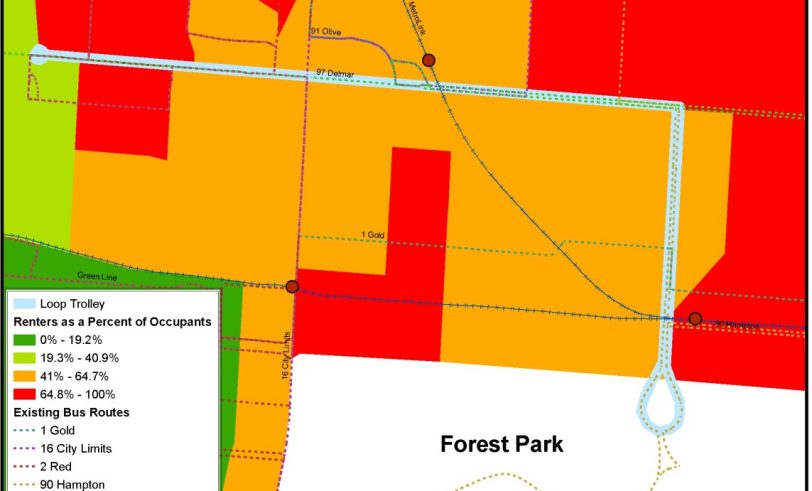Straight Talk about the Loop Trolley

The Loop Trolley is officially over budget. There was speculation earlier this year that the project could not be completed with its original $43 million budget, but for months officials rejected the idea. But as the Post-Dispatch recently reported, costs have now risen to $51 million, an 18% increase over the initial budget.
So who pays for the overrun? As we’ve written before, the Loop Trolley’s financing plan left virtually no room for error. Any cost overrun, be it $1 million or $100 million, would have sent the trolley planners out with a begging bowl. In this case, the trolley project needs an additional $8.4 million. To get that sum, Saint Louis County will have to spend $3 million of its dedicated transit funds to match $5.4 million in federal dollars, all of which could have been spent on other regional transit improvements had the Trolley kept to budget.
The rising expense of the trolley has prompted a reevaluation of its merits, both in terms of transportation and urban revitalization. Let’s be clear: if viewed as a transportation device, the Loop Trolley has no merits. As we wrote last year:
“…the Loop Trolley’s path is intersected by seven MetroBus routes and passes within a few meters of two MetroLink stations. The trolley, if it is built, will be redundant for nearly all conceivable transit trips.” [see the map above]
The project’s slow (10–15 mph average), antique trolley cars are easily outclassed in terms of speed and range both by buses and light rail. And at $23 million a mile, it is certainly not (contra Mr. Edward’s claims) the way of the future for Saint Louis transit. At that cost, recreating the streetcar system of 1902 (with roughly 1/3 the reach of the current bus system) would cost about $13 billion. Streetcars’ only future will be in boutique sections of cities with more money than sense.
The stronger case for the Loop Trolley, and streetcars in general, is that they may spur development. Whether or not streetcars actually create new development is a matter of debate, and the evidence used by proponents is usually weak. However, it is possible that the quaint look of the trolley will draw people to the Loop, and more businesses to area around the tracks. The effect could be similar to having attractive park running down the middle of a street. $51 million is an extremely expensive park, but then the federal government isn’t handing out more than $30 million in transportation grants for local parks.
However, as the Post-Dispatch reported, the construction of the trolley is having a damaging effect on local businesses as potential visitors avoid the chaos. But problems may not end with construction. The slow-moving trollies will operate in mixed traffic in much of the Loop, and aside from creating more congestion, car-on-trolley collisions are just a matter of time. It may be that interest in the trolley will overcome the hassle it creates, but as micro streetcar lines running through kitschy entertainment districts become more common, the Loop Trolley may lose its cache. And that’s something to worry about, because the permanence of a streetcar line can be a double-edged sword.


